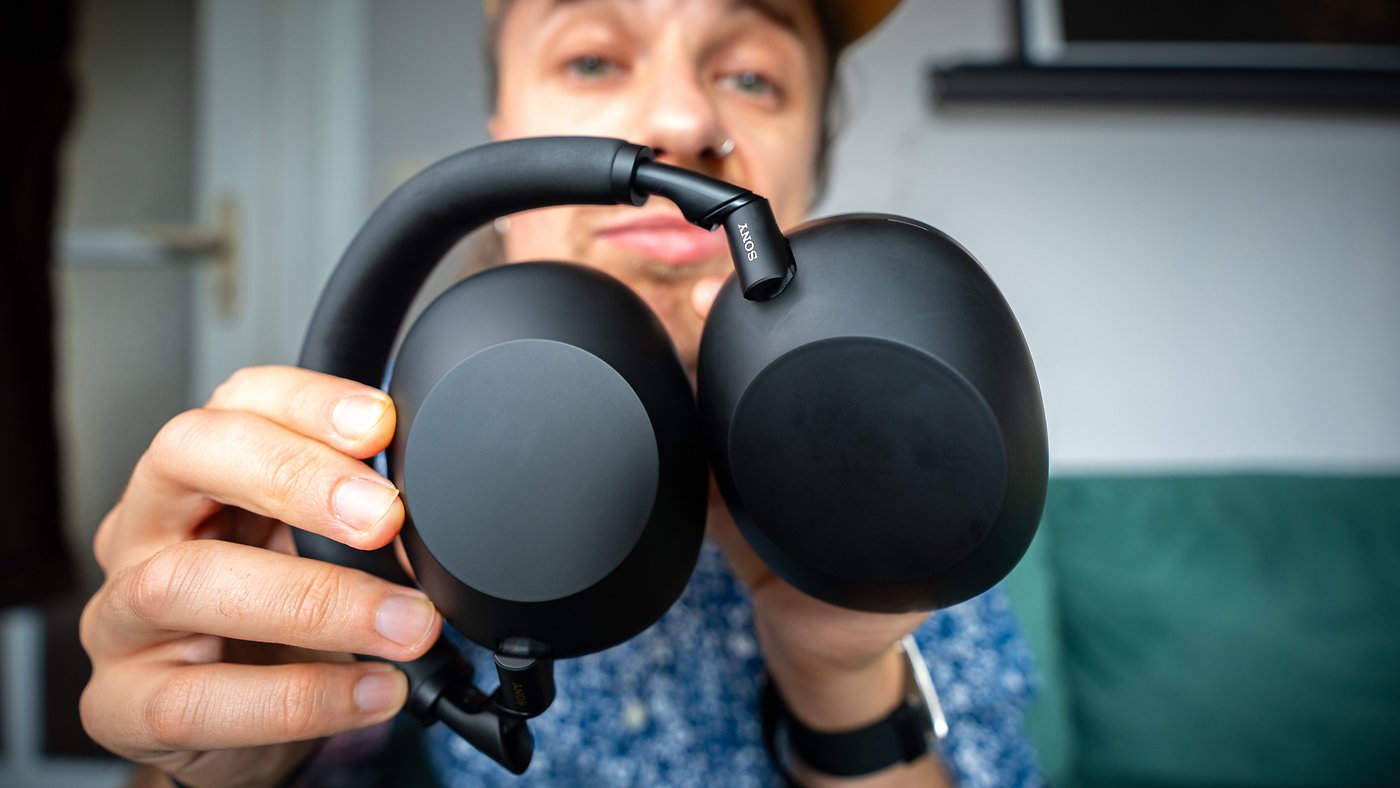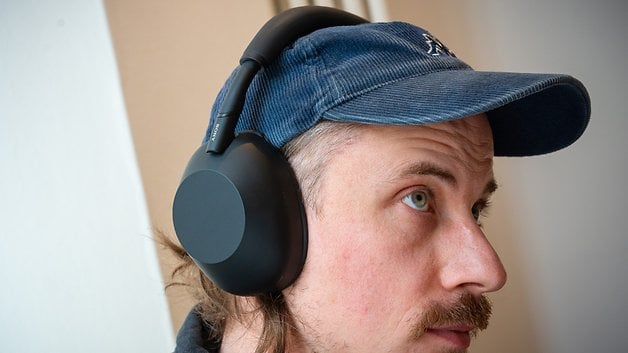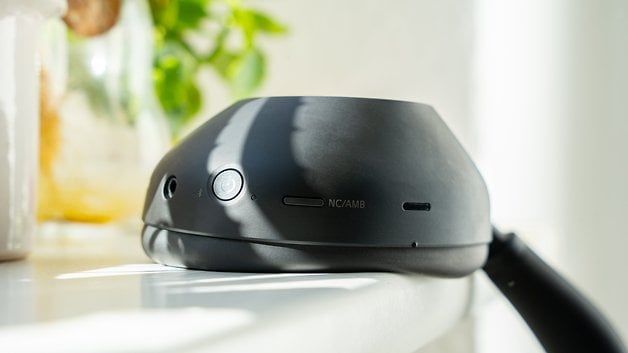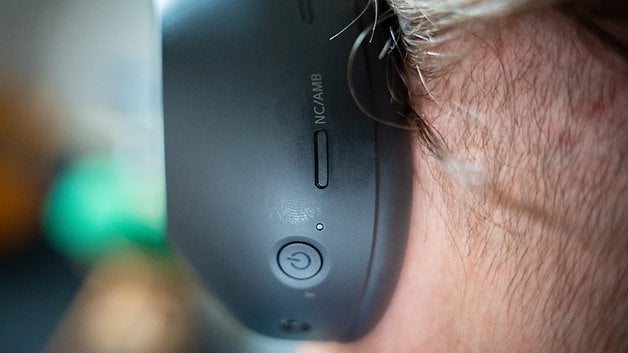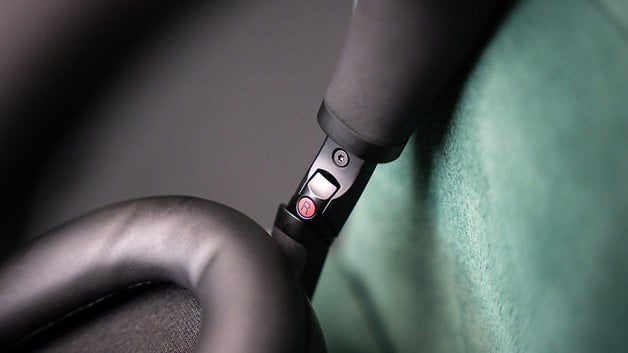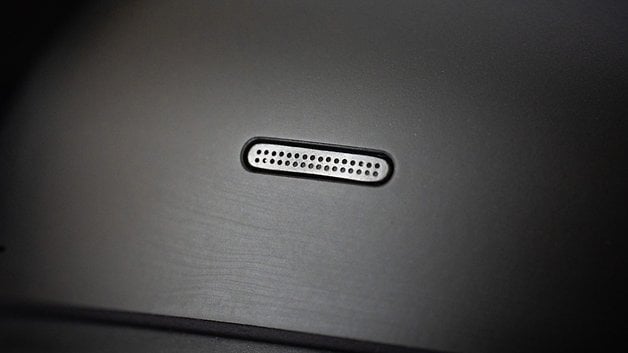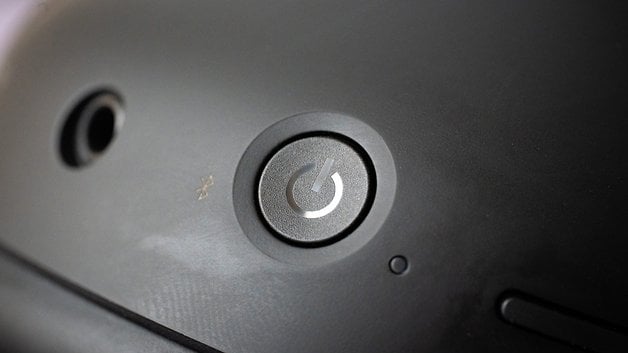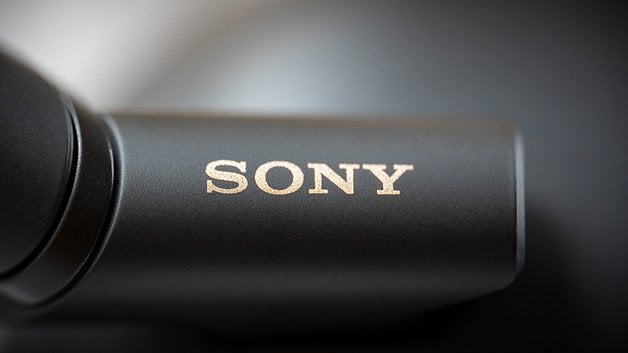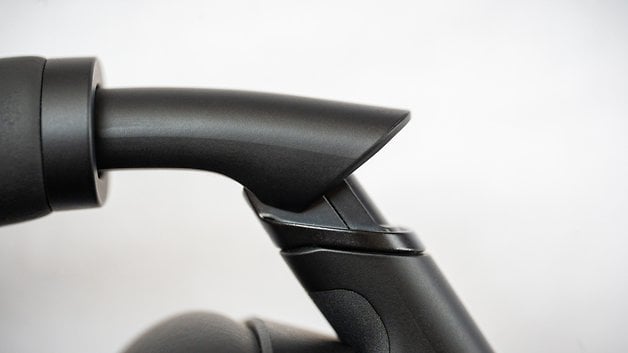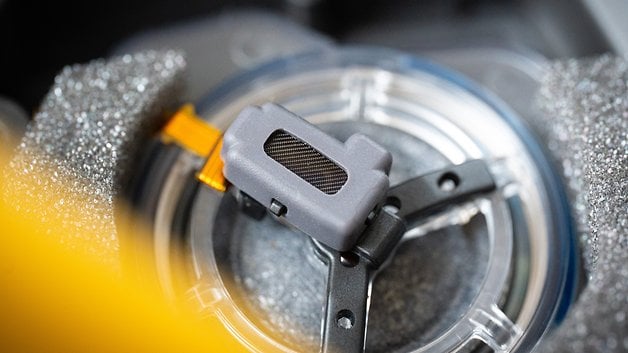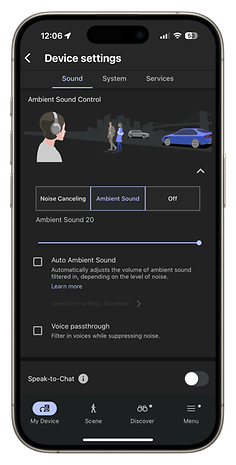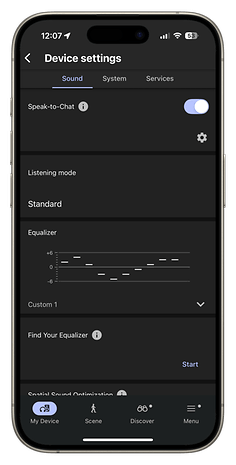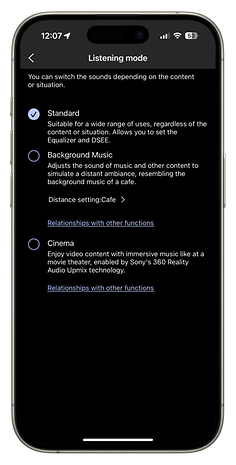How’s the WH-1000XM6 after 3 Weeks? Sony’s Flagship Reviewed
With the return of the foldable design, Sony was able to win a lot of praise with the WH-1000XM6! However, is bringing back a two-year-old feature enough to justify the headphones’ higher price? Over at nextpit, I had the privilege of using the new flagship headphones for almost three weeks and am in a good position to answer all questions you should have before buying them in this review.
Good
- Excellent ANC with a 20-level transparency mode
- First-class sound quality with LDAC and a high-frequency range
- Many smart control options
- More compact format thanks to the foldable design
Bad
- Wearing comfort is not optimal (especially during the summer 🥵)
- Workmanship and choice of materials are too cheap for $450
- Price increase not entirely justified
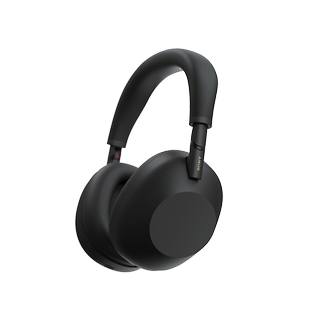
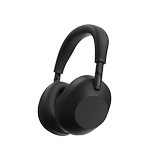
Sony WH-1000XM6: All deals
Price & availability
The WH-1000XM6 from Sony is already available in stores. The $448 price point offers three color variants to choose from. These are Black, Midnight Blue, and Platinum Silver. Unfortunately, the purple version is no longer available.
Design: The foldable makes a comeback in this fingerprint magnet
| Design & processing | |
|---|---|
| Size |
|
| weight | |
| Choice of material | |
| IP certification |
I already revealed earlier in the hands-on: The WH-1000XM6 is once again foldable, reducing the size of the carrying case. Sony still offered foldable ear cups with the WH-1000XM4, so this function is by no means new. However, I found it positive that Sony has responded to customer feedback. Armed with reinforced hinges using metal, it does seem to present a good degree of durability.
Despite having reinforced hinges, folding the over-ear headphones felt a little fragile. Even after a few weeks, I was rather cautious here, and I can still imagine that Sony is prepared to deal with warranty claims for this pair of headphones. The other build quality is also not quite what you would expect from headphones that cost close to $450. Plastic dominates the housing of the WH-1000XM6. To make matters worse, the type of plastic used collects a lot of fingerprints for the black color variant and always looks a little dirty.
Thankfully, we’re not supposed to just look at the WH-1000XM6; we’re supposed to put it on. In this department, too, the competition offers a little bit more. The ear cups of Sony’s headphones are comparatively small, which means that they always press a little on my ears. As I usually wear earrings, the wearing comfort is also affected. Although this results in a good fit, there are more comfortable headphones on the market, such as the AirPods Max (read review) or the Dyson OnTrac.
Two things stand out in comparison to other models: On the one hand, the WH-1000XM6 are very light, tipping the scales at just 252g. On the other hand, Sony attached the leatherette-covered ear pads to the housing using a click mechanism. This eliminates the need for tools as with the previous model. However, I see a certain degree of fragility here again. The view inside the headphones also looks a whole lot less appealing, in my opinion. We are privy to foam and exposed microphones that include cables, which, once again, looked a little cheap.
The carrying case supplied is a much more positive affair. It now closes magnetically and no longer requires a zipper. While you can hide the carrying strap in a closure that makes it convenient, I didn’t like the way the headphones were inserted into the bag. Even after a few weeks, I was never able to insert the headphones intuitively in a correct manner. I always needed several attempts to find the right position in the carrying case.
Overall, the WH-1000XM6 are still stylish and by no means an uncomfortable pair of headphones. However, with an RRP of just under $450, there were too many inconsistencies and some questionable design decisions in terms of durability. What a shame! Last but not least, there is no IP certification. I wouldn’t want to wear the headphones with all their microphone grilles exposed in heavy rain.
Another interesting point to note: as I was able to test the headphones out on very hot days, I noticed they heated up around the arms by quite a margin. So if you find wearing a warm headband uncomfortable, you’ll have to take the WH-1000XM6 off more often.
WH-1000XM6 with Apple feature for control
| Software | |
|---|---|
| Software |
|
| Comfort functions |
|
A decision that Sony should never make a U-turn from, please: Finally, the power button and the ANC button on the left earbud are different haptically. This means that we can blindly feel our way around as to which button we are pressing, as the power button is now round in shape. In addition to the two physical buttons on the left side, we discovered the typical touch control panel on the right side, which is typical of Sony. This is not impractical and controls the volume and music via swipe gestures. However, even after several days, you don’t feel 100% confident with the controls.
In addition to the control options on the headphones themselves, the WH-1000XM6 also offers “invisible” control options. Together with the newly developed companion app, the headphones can automatically control functions such as transparency mode or ANC. This allows the headphones to react when you speak or are spoken to. Since even clearing your throat or coughing is recognized as talking, I deactivated the “Speak-to-Chat” option after two days.
The motion detection function, which activates transparency mode when you stand up with your headphones on, is a far more practical feature. If you were to sit down again, the ANC is automatically enabled. The function can be quite practical and now works more reliably than with the WF-1000XM4 (read review), but it annoyed me more than it helped, leading me to disable the function after four days.
However, I still have a new feature that we are already familiar with from the AirPods with ANC: If you were to receive a call with the WH-1000XM6 on, you can shake or nod your head to accept or reject it. I was also impressed by the revised Sony app in the review, which is now prettier and a little more intuitive.
What I always ask myself when reviewing expensive over-ear headphones, however, is why inexpensive models such as the EarFun Tune Pro (read review) offer so many more customization options. For instance, I can control the volume of the voice output, adjust the operation of the headphones, or configure the duration of the auto-off function. Customers who spend over $400 on their headphones would certainly want something like this. Sony could learn a thing or two here.
However, I want to end on a positive note: The WH-1000XM6 offers wear detection. The fact that this remains reliable even when the headphones are hung around our necks in “DJ mode” is great!
Sound & ANC: Yes, the WH-1000XM6 are the new standard
| Performance | |
|---|---|
| Driver |
|
| Frequency response |
|
| Codecs |
Many online reviewers criticized the WH-1000XM6 for similar shortcomings to those I have mentioned in this review so far. Nevertheless, the headphones are also often cited as the new market leader. This is due to the sound and Active Noise Cancellation, which are said to set new standards. To make things more exciting, I won’t tell you yet whether I agree with the praise. Speaking of which:
Sound quality of the WH-1000XM6
The WH-1000XM6 delivered vocals and everything that goes with them in a technically sound manner. This is because Sony redesigned the headphone drivers. Newly developed 30 mm drivers with carbon fiber composite domes, particularly soft surrounds, and neodymium magnets are now used. The wide frequency response of 4 Hz to 40 kHz is very impressive in principle, but this changes to 20 Hz to 20 kHz in Bluetooth mode. Thanks to LDAC, however, the WH-1000XM6 can achieve sampling rates of 990 Kbit/s at 96 kHz. As more and more Android manufacturers, including Samsung, Xiaomi, Google, and, of course, Sony itself, support LDAC, I would no longer consider the lack of AptX to be a disadvantage.
Another advantage is that the sound of the WH-1000XM6 can now be even better customized. This is because Sony has expanded the previous 5-band equalizer of the Sound Connect app to a 10-band equalizer. In my opinion, however, the WH-1000XM6 remained a little too boomy in the bass range, even if we were to fiddle with the equalizer. Low bass boomed quite strongly, which became unpleasant in the long run. The highs and mids, on the other hand, were nice and clear and remain so even at higher volumes and with a strong emphasis via the equalizers.
These made the WH-1000XM6 technically great-sounding and flexible, offering something I liked in all genres. However, you should take the time to adapt the sound to your needs and not rely on the first impression you get in the technology market. The standard sound setting is quite flat and initially didn’t impress me at the Sony press event.
In addition to the technical features, Sony’s latest headphones also come with the usual sound optimization functions that we already know from previous models. These include DSEE Extreme, which can now use AI to extend the frequency response of lower-quality music. I couldn’t hear any real difference in reality.
Sony’s new sound environments are much more efficient and audible. With these, the headphones sound as if you were listening to background music in a café or a room. I think it’s quite nice, and after a while, you forget you’re wearing headphones. However, you only get real surround sound in conjunction with Bravia televisions and corresponding transponders.
ANC sets new standards
Let’s revisit the ANC technology. The WH-1000XM6 now feature 12 microphones instead of 8 and use two processors to suppress ambient noise. My initial impression during the review duration was confirmed time and again that the headphones reacted in a particularly flexible manner and quickly to noises. The fact that popping noises or honking horns in traffic were “missed” by the ANC was less common than with competitors and predecessors.
The performance of the noise suppression was also impressive. I wouldn’t recommend using the WH-1000XM6’s ANC in traffic or when you’re expecting guests. Doorbells were easy to ignore with active music playback enabled and the headphones suppressed approaching traffic efficiently enough to make it dangerous, even without music playing. During the review duration, I was always able to ensure a quiet environment, which was extremely pleasant when working or generally getting around in large cities.
It is also practical that Sony has improved the transparency mode. It now sounds more spatial and realistic, and amplifies the surroundings so much that you can even hear the rustling of clothes. The Sony app also allows us to mix the strength of the transparency mode with the ANC across 20 levels. This means you can usually find a good mix of hearing in our surroundings and retreating to a quiet enclave.
Speaking of hearing and not hearing: Sony still offers the Speak-to-Chat feature, but after a few days, I turned it off because it activated the transparency mode even when I was clearing my throat or humming. To be honest, I also found it strange or even rude not to remove the headphones during conversations. Except, of course, when …
Better telephony thanks to beamforming
… I’m on the phone! Sony uses beamforming microphones on the front of the headphones to pick up calls more directly. Together with another excellent noise suppression option for ambient noise when making calls, this resulted in very good call quality. I made calls in quiet environments, in traffic, and near a running lawnmower. In each case, the other party could not make out what was happening in the background.
The only thing that bothered me about making calls with the WH-1000XM6 is that they don’t automatically switch to transparency mode. Of course, transparency mode, which allows for more natural speech, is just a push of a button away. However, if you were to activate motion detection, it is always switched off. I would like to see a native function for phone calls in the future.
Battery & charging: Nothing special, nothing bad
| Battery | |
|---|---|
| Battery life |
|
| Charging speed |
|
Sony’s new flagship headphones do not offer any improvement in battery life. However, since the runtime of 30 hours with active ANC and 40 hours without ANC is very suitable for everyday use, this didn’t bother me too much. With my usage patterns, the headphones lasted for around two weeks. Admittedly, despite all the advantages of modern over-ear headphones, I prefer to use compact in-ear models when I’m out and about. Needless to say, I mostly used the WH-1000XM6 at home.
With a power socket nearby, the new Sony flagships offer an advantage: they can now also be used while charging using the USB-C charging cable. This also charges the headphones; a full charge takes 3.5 hours. If you don’t want to fully charge the headphones, you can also use the quick charge function. This allows the headphones to run for 3 hours on a three-minute charge.
So, is it worth buying the WH-1000XM6 now?
So, do I confirm the top ratings and praise from other online reviewers?
Yes, if you are looking for the most technically sophisticated over-ear ANC Bluetooth headphones on the market. The WH-1000XM6 delivers first-class ANC that will always leave you speechless in everyday life. For instance, when you suddenly can no longer hear a rushing tap when you switch from transparency mode to ANC. Or when you suddenly find peace and quiet in noisy environments so that you can work or relax.
The WH-1000XM6 also impressed in terms of sound quality. This is mainly due to the new drivers, which resolved music beautifully and covered a particularly high-frequency range. However, the new 10-band equalizer made the biggest difference in everyday use with its improved customizability. Together with the sound environments, it was able to simulate other rooms in an amazingly realistic manner.
In general, the WH-1000XM6 offer many functions that are by no means mere gimmicks. With the exception of Speak-to-Chat, I can imagine useful everyday applications for all the features. Even if I deactivated all of them after a few weeks.
Where the WH-1000XM6 disappointed me — and that’s the “no” in my conclusion- is the build quality and the less-than-optimal wearing comfort. If I were to buy headphones for $450, I personally would like to see more metal elements or rudimentary water protection. I shouldn’t want to handle the new hinge with care every time I put the headphones in the carrying case.
Not forgetting the fact that after just one hour of wearing them, my ears shouldn’t hurt and get so warm that I regularly take the headphones off. The WH-1000XM6 are technically very good headphones, but you should wear them and hold them in your hands to get a feel before deciding to pick a pair up.
